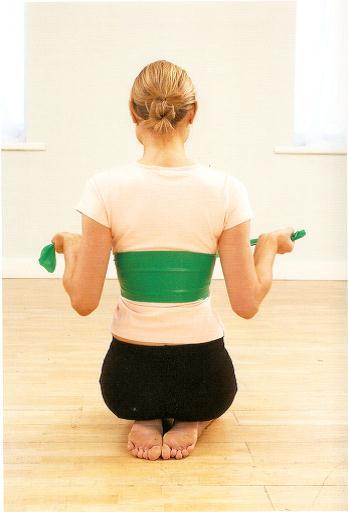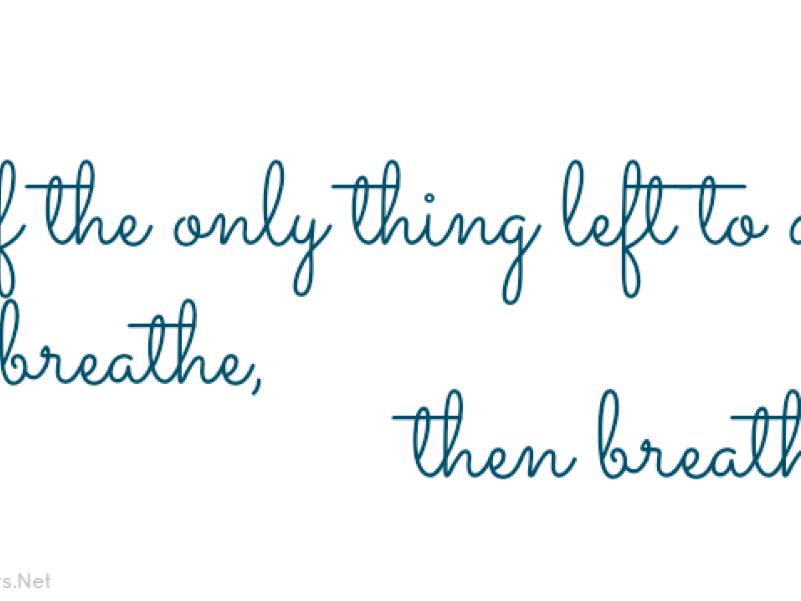Why is Pilates Exercise suited to the Equestrian Athlete? - Breathing
“Pilates: a system of exercises using special apparatus, designed to improve physical strength, flexibility, and posture, and enhance mental awareness” ` The Oxford Dictionary 2013
Horse riding requires muscular endurance, spinal stability and mobility dependant on the phase of gait of the horse, control and co-ordination of muscular activation and ultimately awareness of the rider’s body and the rider’s influence on the horse’s movement.
Pilates and in particular EQUESTRIAN PILATES® address these requirements in full. So why wouldn’t you investigate how these exercises can assist you in becoming a better rider.
Over the next few months I will introduce to you each Pilate’s principle and explain how they relate to the Equestrian Athlete and provide a simple exercise for you to try that addresses this principle.
2. Pilates Principle: Breathing
Breathing… one of our most basic needs and yet also one of those things we don’t generally take the time to do well.
“Joseph Pilates believed that breathing fully ensures the blood is charged with oxygen with each inhalation, while assisting the complete removal of waste gases through exhalation. Breathing deeply stretches and releases tension from the muscles during exercise, promoting optimum body control.
When breathing, the deep abdominal and pelvic floor muscles must be engaged and each breath coordinated with each movement. Breath is considered to be one of the most important parts of an exercise. Failure to breathe properly means that the exercise has not been performed adequately.” - Polestar Pilates Manual 2007
Scientifically however there are several factors that are proven to be affected by our Breath….
Bradcliff® practitioner Tania Clifton-Smith MNZSP, DipPhys, NZMTA, mentions in her blog ‘Breathing Pattern Disorders and the Athlete’ that physiologically every cell in the body requires oxygen to survive yet the body also needs to rid itself of carbon dioxide (CO2), therefore the breathe out is as physiologically important as the breathe in.
She also mentions that the muscles which control core stability as mentioned in our first blog ‘Centre’ not only work to protect the lumbar spine but also create ideal intra-abdominal pressures, contributing to motility of fluid based systems within the body, i.e. gastrointestinal, lymphatic drainage, arterial and venous circulation, ensuring the blood flows adequately throughout the body redistributing the oxygen where it is needed and assisting to clear the waste products generated by the muscle and internal organs.
To read more from this blog http://php5.mydns.net.nz/bradcliff.com/?page_id=35
It is important to remember movement facilitates breath & breath facilitates movement.
Exhalation is utilised to promote mobility and inhalation to promote stability. For example inhale deeply and feel the movement within the spine – some straightening of the spine and possibly extension of the upper back is felt. As you exhale, note the curling feeling as the body wishes to move into flexion along with the contraction of the core as you complete the exhalation. Now lying on the floor attempt to curl forward breathing in…. now attempt the same curl forward as you breathe out… which did you find assisted your movement more?
 Now while in a ‘rest position’ take a deep breath into one side of the ribs only – directing the breath into one lung. Note the tendency for the body to move away from the filled side of the lungs, promotion of lateral flexion can be felt.
Now while in a ‘rest position’ take a deep breath into one side of the ribs only – directing the breath into one lung. Note the tendency for the body to move away from the filled side of the lungs, promotion of lateral flexion can be felt.
 Sitting on your chair with both arms crossed over your body and sitz bones sitting evenly weighted. Breathe in to rotate in one direction aiming to keep the hips still and steady, Breathe out to return to the centre. Now reverse the breath, breathing out to rotate in one direction and breathing in to return to centre… which breathe assisted your rotation more?
Sitting on your chair with both arms crossed over your body and sitz bones sitting evenly weighted. Breathe in to rotate in one direction aiming to keep the hips still and steady, Breathe out to return to the centre. Now reverse the breath, breathing out to rotate in one direction and breathing in to return to centre… which breathe assisted your rotation more?
 Now try this while riding a downward transition… this can be done through transition at any pace… walk – halt – walk, trot – walk – trot or trot – canter – trot. On the down ward transition, breathe in. This will ensure your body remains stable and upright, preventing a collapse at the waist. The in breathe as mentioned above it for stability and when we ask for a downward transition we are asking the horse to stabilise and rebalance itself for the change. Now attempt the same downward transition on a breath out and see if you notice a difference? For upwards transitions utilise the breath out as this promotes spinal mobility and allows the body to follow the movement of the horse. As mentioned above we utilise a breath out for mobility therefore it makes sense for us to breathe out to ask our horse to move forward, while the core activates to allow our seat to deepen and strength to come from our legs.
Now try this while riding a downward transition… this can be done through transition at any pace… walk – halt – walk, trot – walk – trot or trot – canter – trot. On the down ward transition, breathe in. This will ensure your body remains stable and upright, preventing a collapse at the waist. The in breathe as mentioned above it for stability and when we ask for a downward transition we are asking the horse to stabilise and rebalance itself for the change. Now attempt the same downward transition on a breath out and see if you notice a difference? For upwards transitions utilise the breath out as this promotes spinal mobility and allows the body to follow the movement of the horse. As mentioned above we utilise a breath out for mobility therefore it makes sense for us to breathe out to ask our horse to move forward, while the core activates to allow our seat to deepen and strength to come from our legs.
How to breathe - Posterior-Lateral Basal Breathing.
While there are many valid forms of conscious breathing that support different forms of exercise, movement and relaxation, Pilates teachers emphasise posterior-lateral basal breathing over other techniques.
Reasons for Posterior-Lateral Basal Breathing:
- Increase breathing capacity and lung function
- Maintain abdominal support of the lumbar spine
- Improve thoracic spinal mobilization and function
- Restore optimal posture
- Reduce the negative effects of upper chest breathing (accessory breathing)
So how do I know if I have good Posterior-Lateral Basal Breath?
 Sit tall on a handy chair and wrap a towel or lead rope around the lower 6 to 7 ribs (bottom of sternum is rib number 7), crossing the ends in front, gently pulling to emphasis closing of the ribs. Now take a deep breathe in focusing that breathe into the base of the ribcage and the upper back. Notice how the ends of your lead rope slide back and forth with the breath. The breathe in both ends sliding towards one another as the ribcage expands, the breathe out the ends sliding away from one another as the ribcage closes.
Sit tall on a handy chair and wrap a towel or lead rope around the lower 6 to 7 ribs (bottom of sternum is rib number 7), crossing the ends in front, gently pulling to emphasis closing of the ribs. Now take a deep breathe in focusing that breathe into the base of the ribcage and the upper back. Notice how the ends of your lead rope slide back and forth with the breath. The breathe in both ends sliding towards one another as the ribcage expands, the breathe out the ends sliding away from one another as the ribcage closes.
EQUESTRIAN PILATES® teaches breath in the form of the Upline/Downline
“Upline/Downline is used to establish a centred feeling and lift in the body. This feeling is used to create strength, control and power. It assists in moving our body efficiently and with ease.” - Elizabeth Hanson – EQUESTRIAN PILATES® Certification Manual 2009
Upline = imagine that the inhale starts at the feet working up the body to the top of the head.
Downline = imagine that the exhale starts at the top of the back of the head and works its way down the entire backside of the body, down through the legs and out the feet into the ground.
Relationship to Riding: It is common to forget to breathe… ever come out of the dressage arena, Showjumping ring or off the XC gasping for breath? It is possibly you forgot to breathe and have hyperventilated. Breath enhances muscle function and the focus on breath up and down the body naturally begins to help us to assume a better posture, especially when practised in the saddle. Take notice as your breathe in as to where the shoulder, hip and heel ‘want’ to be, and as you breathe out note the deepening of the seat, directing of your energy out through the heels.
So the next time you ride be aware of your breath. Be aware of its ability to relax you, to mobilise you, stabilise you and move you. Be aware of its ability to make you more consciously aware of how your breath can assist your ability to communicate with your horse.

